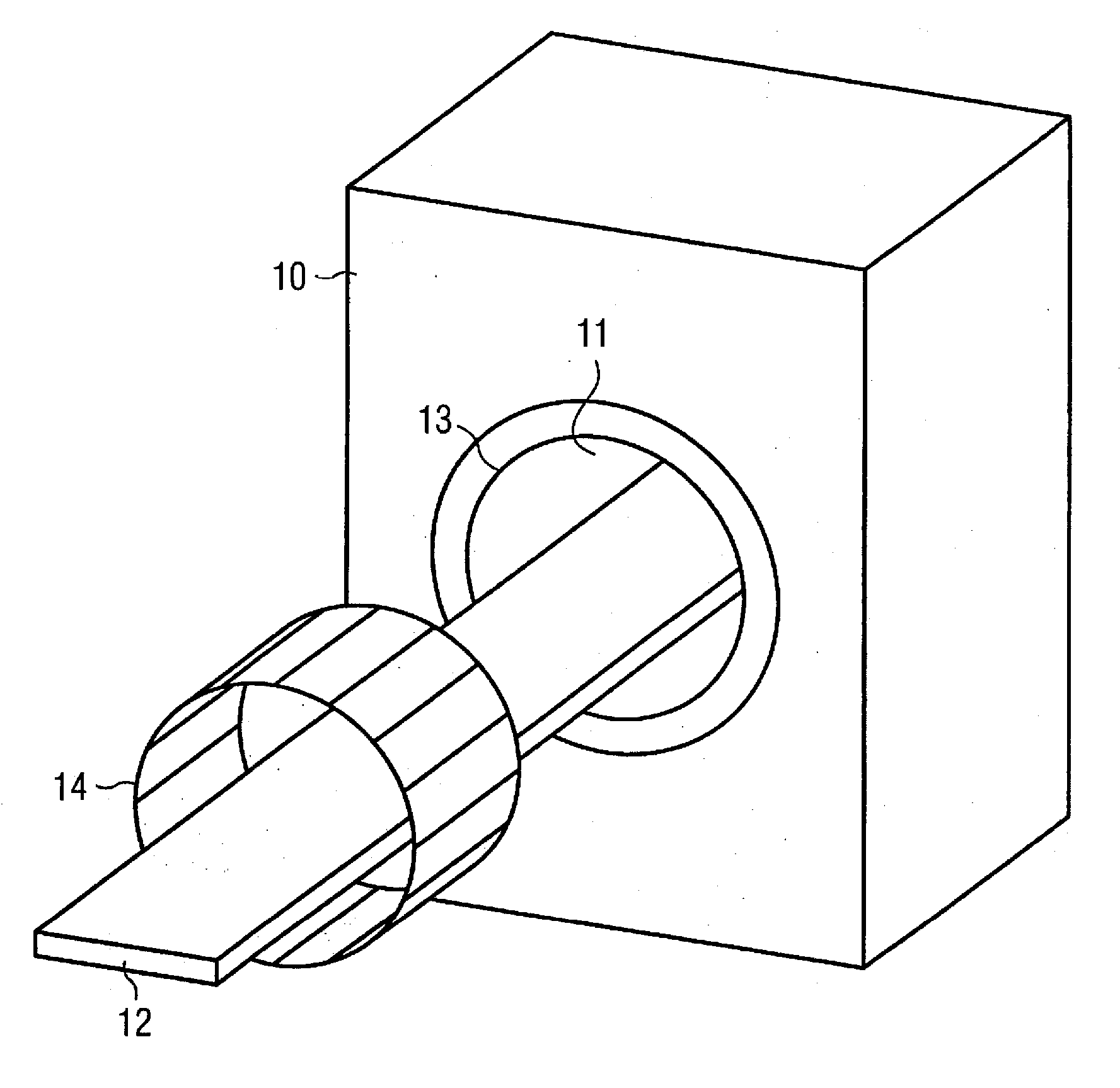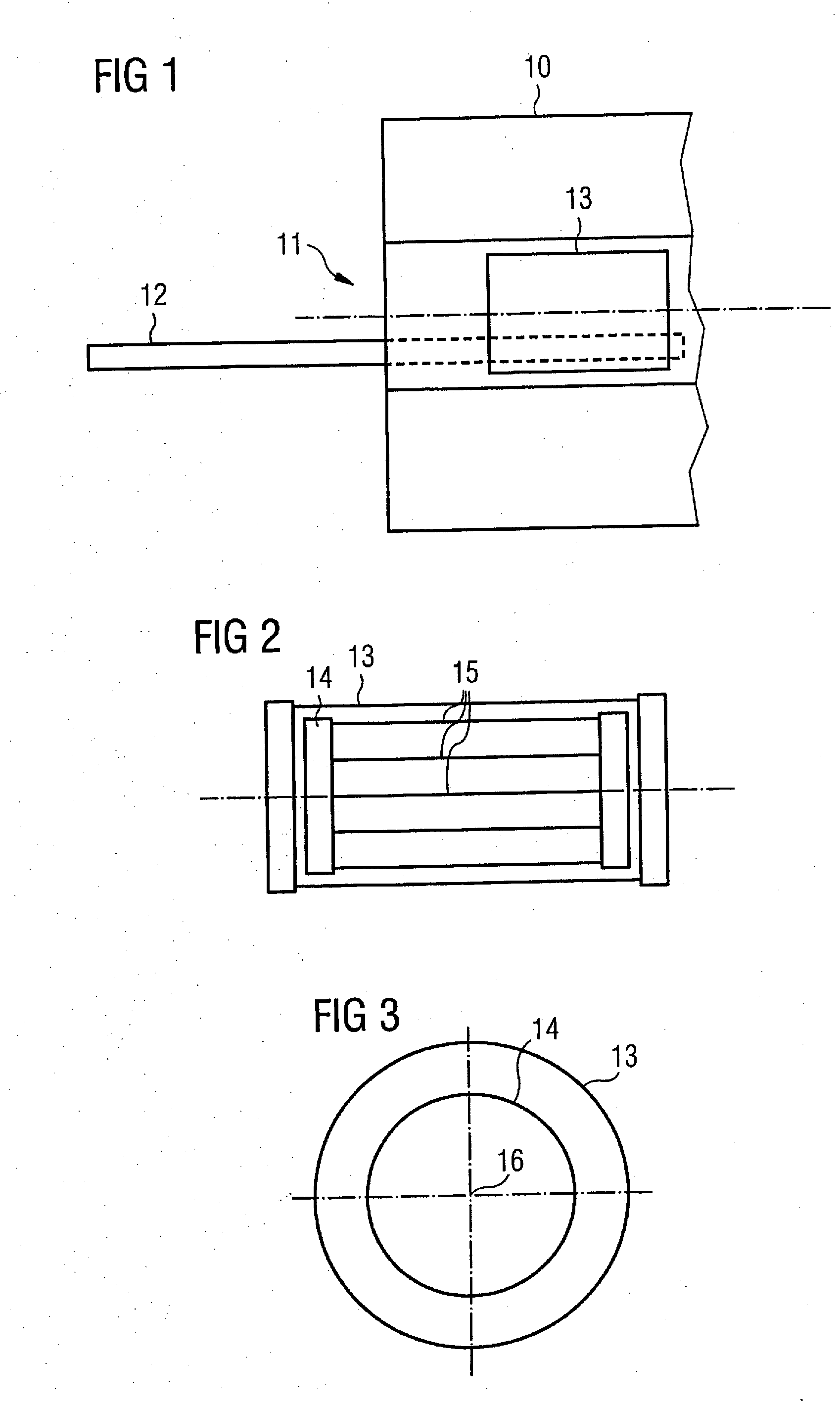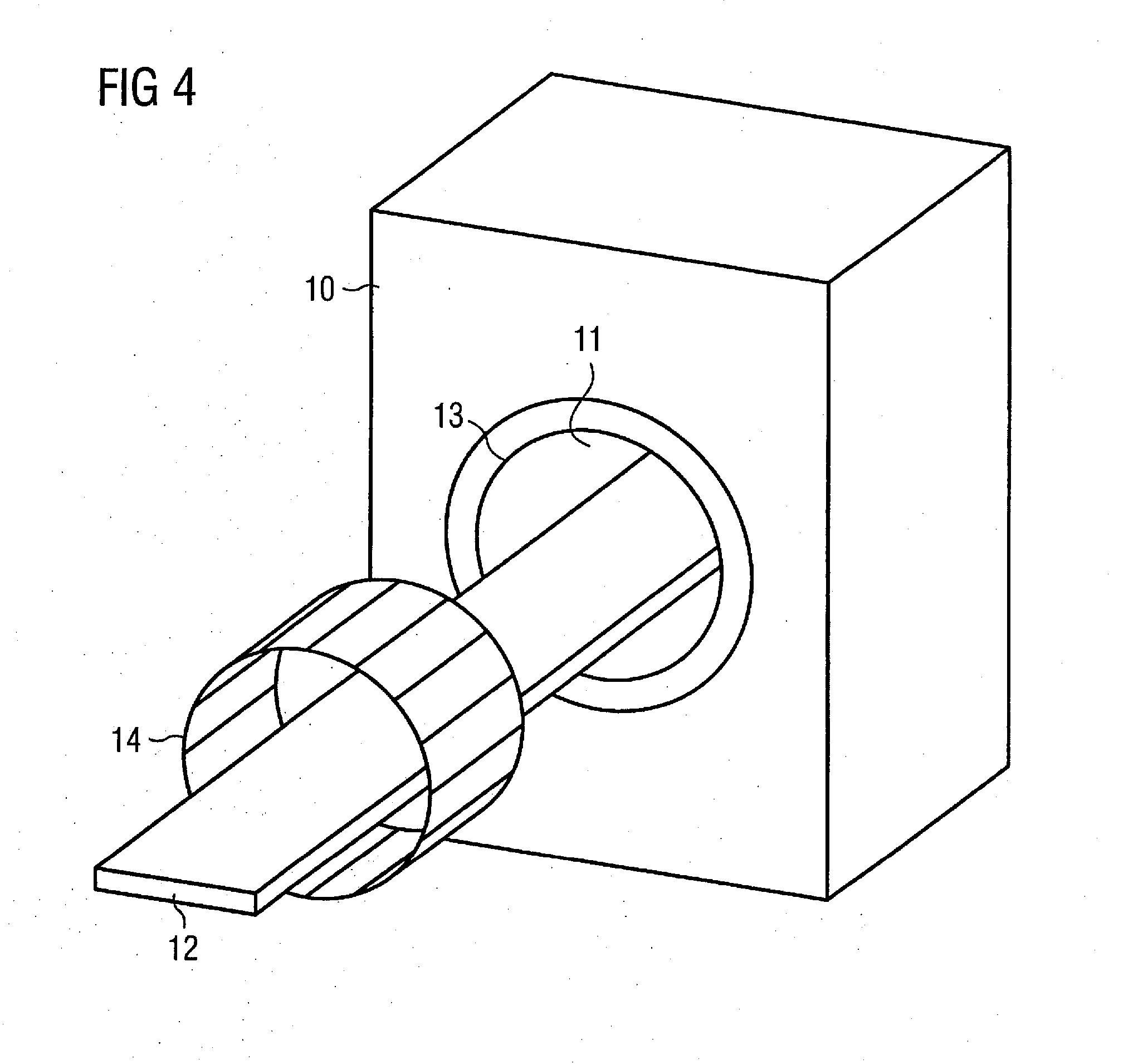Radio-frequency transmission arrangement for a magnetic resonance system
a magnetic resonance system and radio frequency transmission technology, applied in the direction of magnetic variable regulation, process and machine control, instruments, etc., can solve the problems of unwanted changes in the image intensity of the shown mr image, costly and time-consuming,
- Summary
- Abstract
- Description
- Claims
- Application Information
AI Technical Summary
Benefits of technology
Problems solved by technology
Method used
Image
Examples
Embodiment Construction
[0021] Schematically shown in FIG. 1 is a MR system 10 in a cross-section. As generally known, this MR system 10 has an opening 11 into which a patient table 12 with an examination person (not shown) lying thereon can be inserted. The functionality of the MR system is generally known and need not be explained in detail herein. Furthermore, in FIG. 1 a whole-body antenna 13 that is permanently integrated into the MR system, that generates a homogeneous B1 field in the examination subject to excite magnetization of the nuclear spins. In the present context, the term “whole-body antenna” means an antenna of the type typically installed in an MR system. This whole-body antenna can generate a homogeneous field distribution. If a multi-channel transmission arrangement should be generated in the MR system shown in FIG. 1, this whole-body antenna 13 would have to be exchanged. However, according to the invention it is possible to use this whole-body antenna 13 (which is also shown in FIG. 2...
PUM
 Login to View More
Login to View More Abstract
Description
Claims
Application Information
 Login to View More
Login to View More - R&D
- Intellectual Property
- Life Sciences
- Materials
- Tech Scout
- Unparalleled Data Quality
- Higher Quality Content
- 60% Fewer Hallucinations
Browse by: Latest US Patents, China's latest patents, Technical Efficacy Thesaurus, Application Domain, Technology Topic, Popular Technical Reports.
© 2025 PatSnap. All rights reserved.Legal|Privacy policy|Modern Slavery Act Transparency Statement|Sitemap|About US| Contact US: help@patsnap.com



